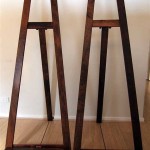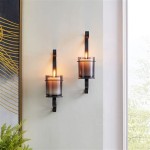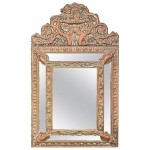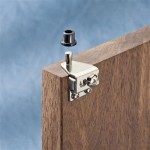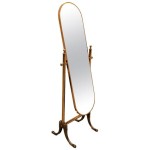Do Convex Mirrors Make Things Bigger or Smaller?
The type of mirror used in a particular application plays a crucial role in determining the size and clarity of the reflected image. Among the various types of mirrors, convex mirrors stand out for their distinct properties. Understanding the essential aspects of convex mirrors helps us comprehend how they affect the size of objects they reflect. In this article, we will delve into the fundamental aspects of convex mirrors and explore their impact on the size of reflected objects. ### Focal Length A convex mirror, often referred to as a diverging mirror, has a positive focal length. Unlike concave mirrors, where light rays converge at a focal point in front of the mirror, convex mirrors cause light rays to diverge, or spread out, as if they originated from a point behind the mirror. The focal length of a convex mirror is the distance between the mirror's surface and the virtual focal point behind it. ### Virtual Image Images formed by convex mirrors are always virtual and upright, meaning they appear to be located behind the mirror and are oriented in the same way as the object. The virtual image is a result of the divergence of light rays after reflection from the mirror's surface. The image distance, which is the distance between the mirror's surface and the virtual image, is negative for convex mirrors. ### Magnification The magnification of a mirror is the ratio of the image height to the object height. For convex mirrors, the magnification is always less than 1. This means that the image formed by a convex mirror is always smaller than the object. The smaller the magnification, the smaller the image appears. ### Field of View Convex mirrors have a wider field of view compared to concave mirrors or flat mirrors. This is because the diverging rays reflected from the convex mirror cover a wider area. The wider field of view makes convex mirrors suitable for applications where a broader perspective is desired, such as in side mirrors on vehicles or security surveillance cameras. ### Applications Convex mirrors find diverse applications due to their unique properties. They are commonly used in: - Side mirrors of vehicles to provide a wider field of view for drivers - Security surveillance cameras to monitor a broader area - Convex shaving mirrors to give a wider view of the face - Traffic signs to enhance visibility at intersections - Decorative mirrors to create an illusion of space ### Conclusion Convex mirrors, with their diverging nature and positive focal length, produce virtual and upright images that are always smaller than the object. Their unique properties, such as a wider field of view and smaller magnification, make them suitable for various applications. Understanding these essential aspects of convex mirrors is crucial for effectively utilizing them in different scenarios.How Do Reflections From Convex Mirrors Make Objects Appear Smaller Quora

Convex Mirrors And Objects Larger Than The Mirror

Convex Mirrors And Objects Larger Than The Mirror
Objects In The Mirror Are Actually Images Article Khan Academy
Objects In The Mirror Are Actually Images Article Khan Academy
Why Does The Car Side Mirror Display Objects Appear Further Than They Are Not Just Make As Quora

Convex Mirrors And Objects Larger Than The Mirror

Question Comparing The Sizes Of Images Produced By A Concave Mirror Nagwa
Objects In The Mirror Are Actually Images Article Khan Academy

Does A Convex Mirror Make Things Bigger House Caravan


